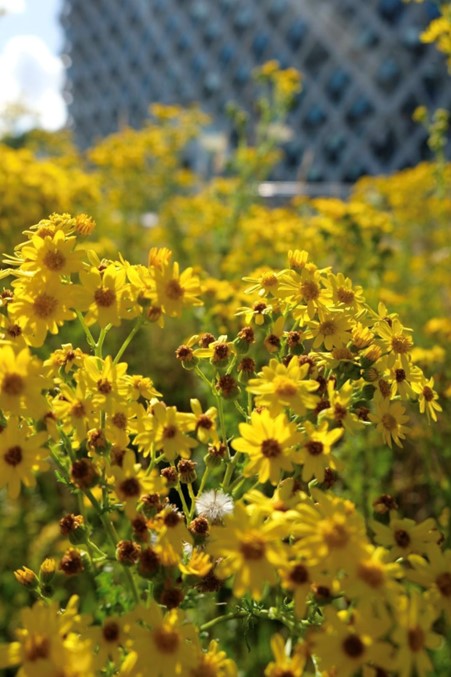Scientific name: Senecio jacobaea
Common name: ragwort
Flowering time: June to November
Where to find it on campus: next to Atlas
This bright yellow, sweet-scented flower is frequently found in Northern Europe. The common English name “ragwort” describes the shabby, rag-like leaves. The scientific name comes from the Latin word “senex”, which means old man. Joop Schaminée: ‘This is because the flowers of species in the genus Senecio will all turn into a fluffy white “pappus”, similar to that of a dandelion. This bundle of fluffy white-crowned seeds looks similar to the face of an old man with a beard, so the genus of plants producing such pappus was named Senecio.’
Look out in the coming months because the fields of yellow on WUR campus will turn into fields of white fluff! In Dutch and German, the name “kruiskruid” is up for debate… It either comes from the word for grey (grijs in Dutch) and therefore also describes the greyish white fluff, or from the word “kruis” which means cross and describes the cross-like shape of the leaves growing off the stem. Perhaps it’s a good idea to go investigate which name you think suits best! Saint Jacob’s day is on the 25th of July, which happens to be when these flowers are in full bloom – hence the name “jacobaea.” Although aesthetically pleasing, this flower is disliked by farmers. It contains a very poisonous alkaloid, and if it accidentally finds its way into hay for animal feed, it will make livestock very sick – especially horses.

 Jacobskruiskruid
Jacobskruiskruid 

